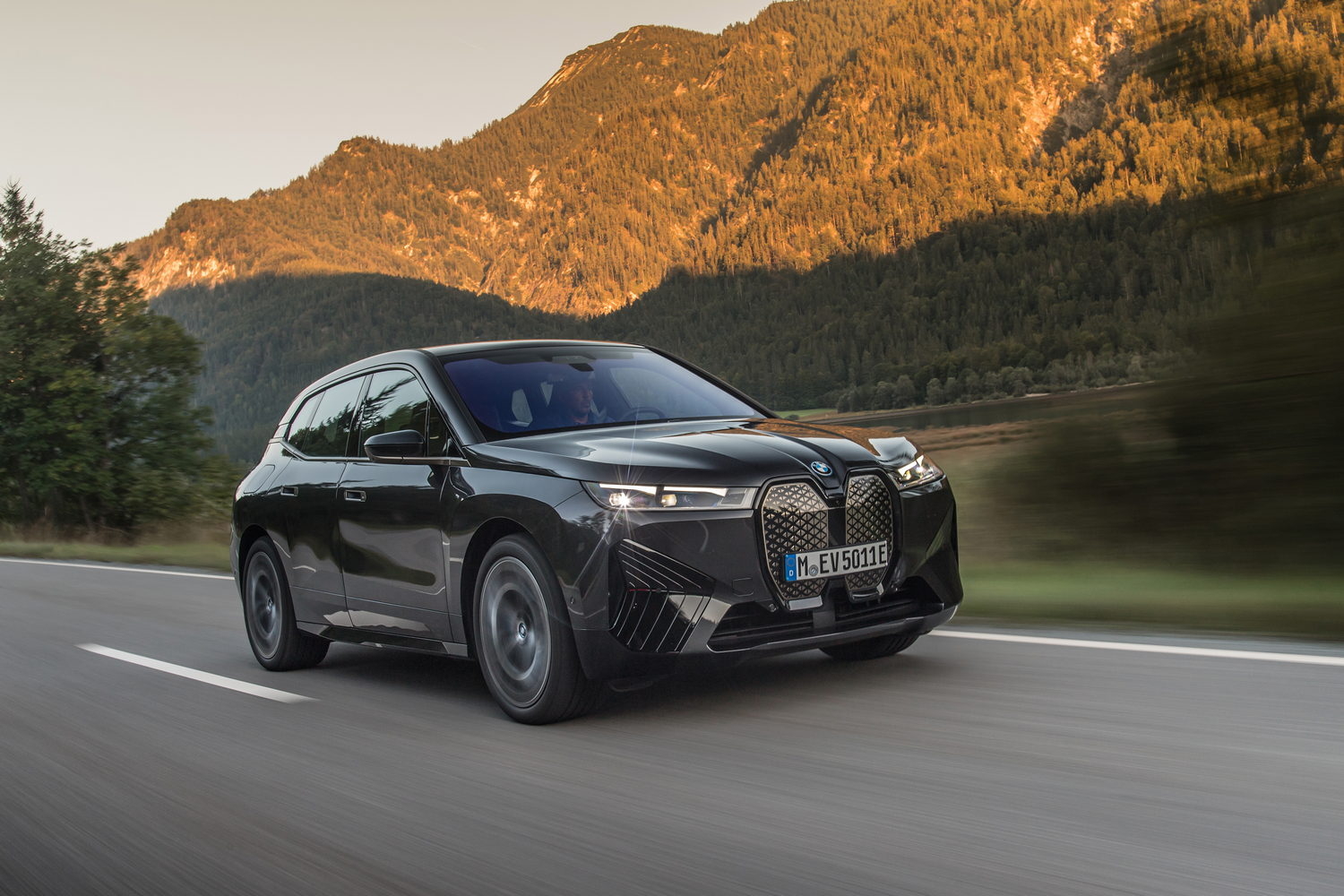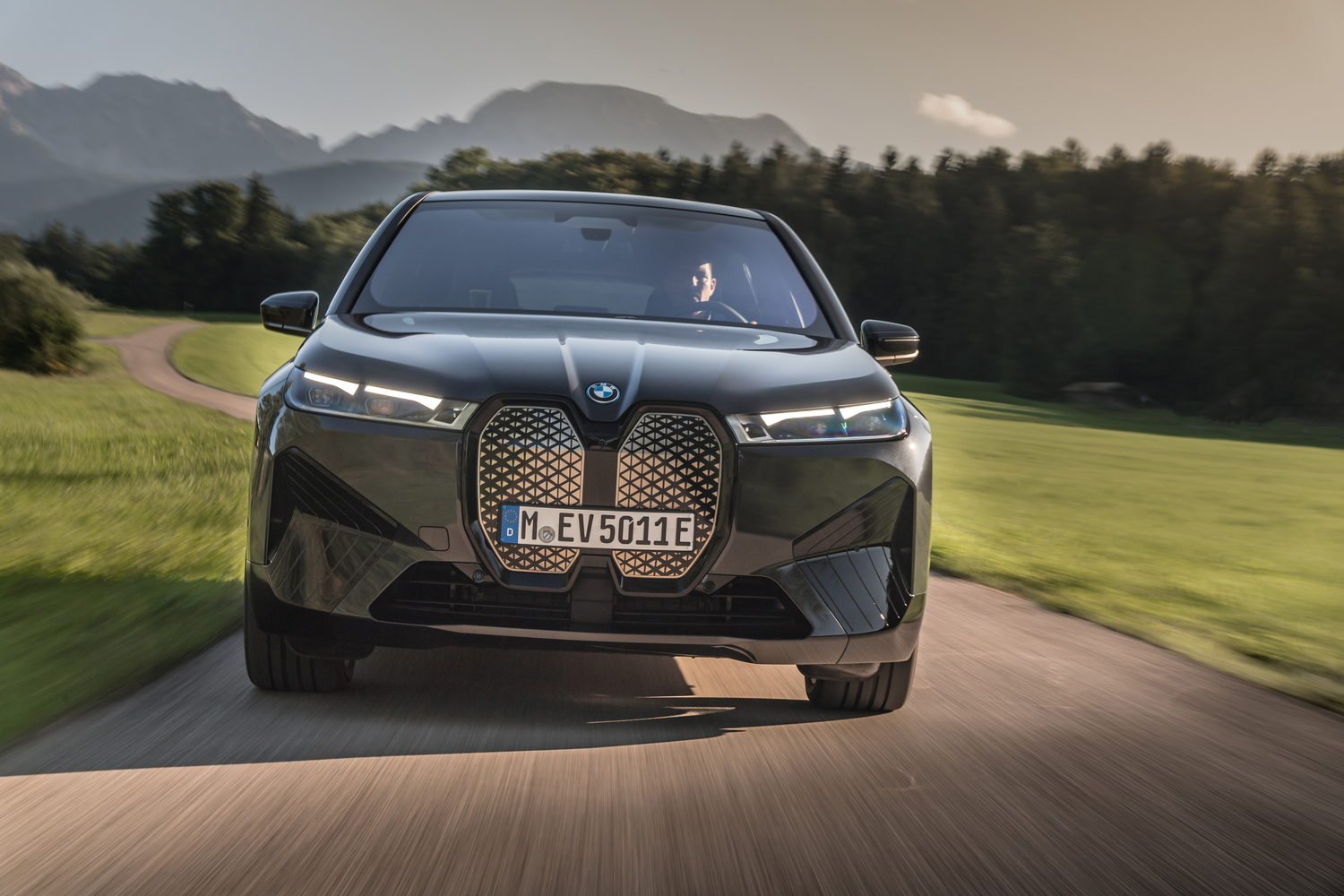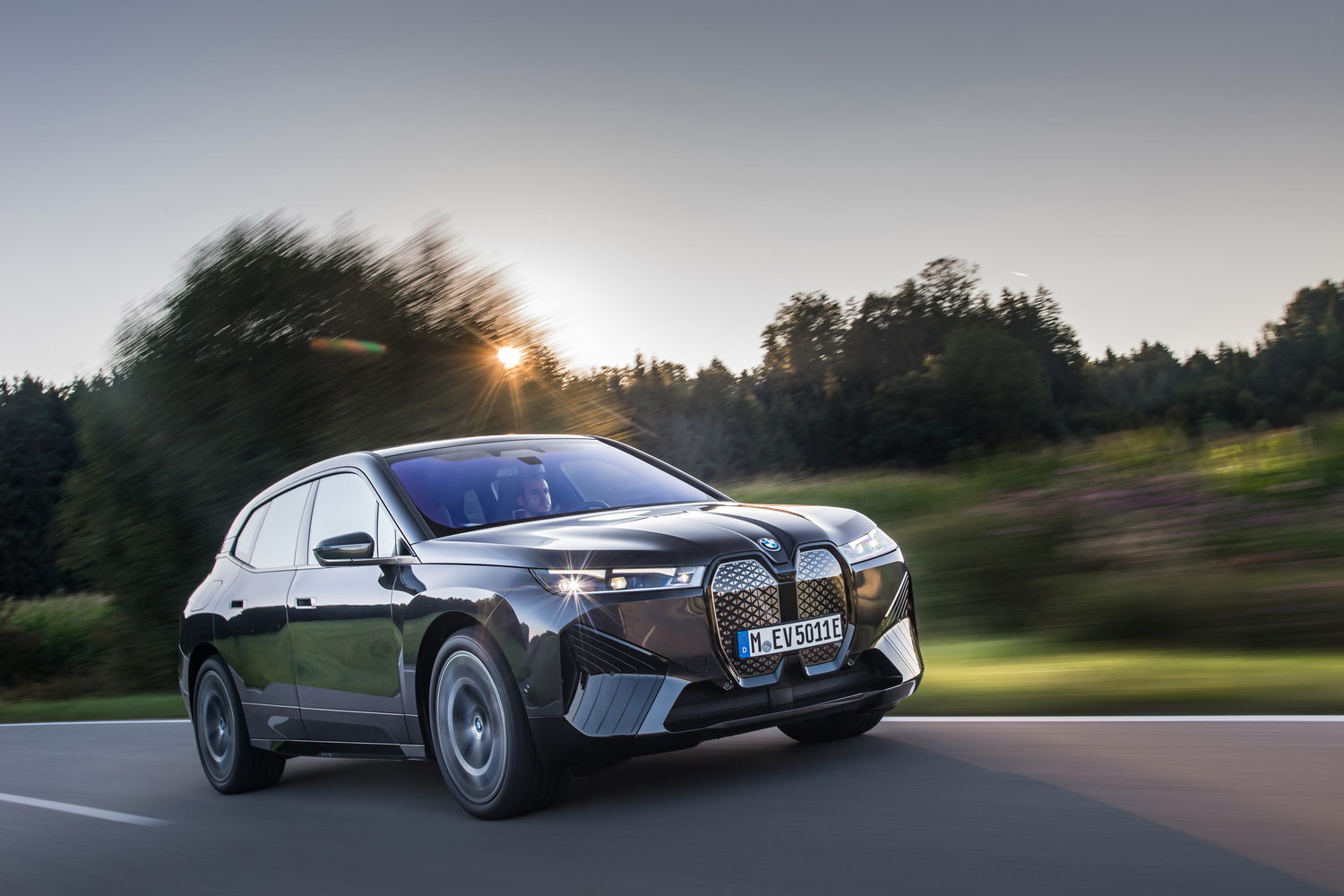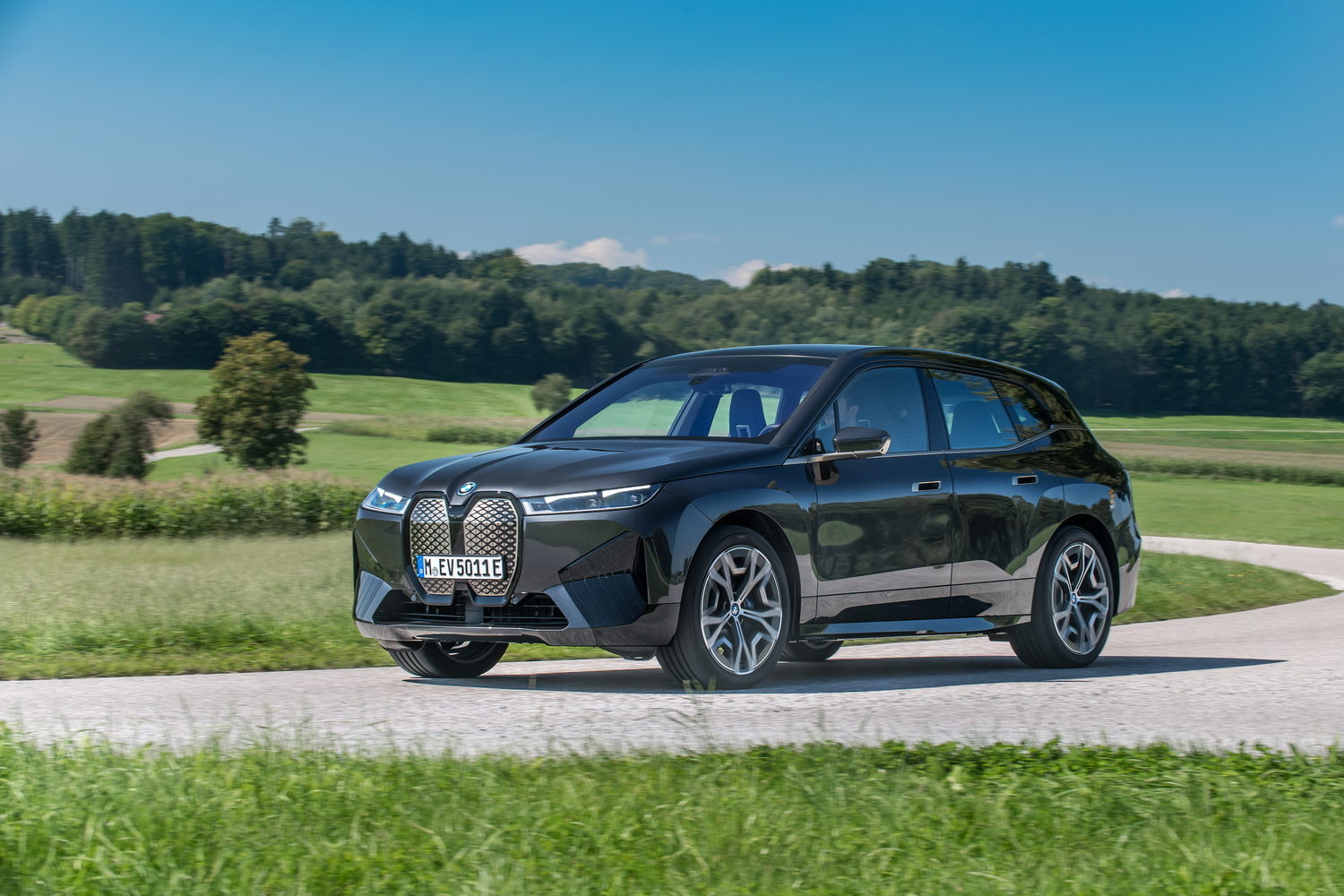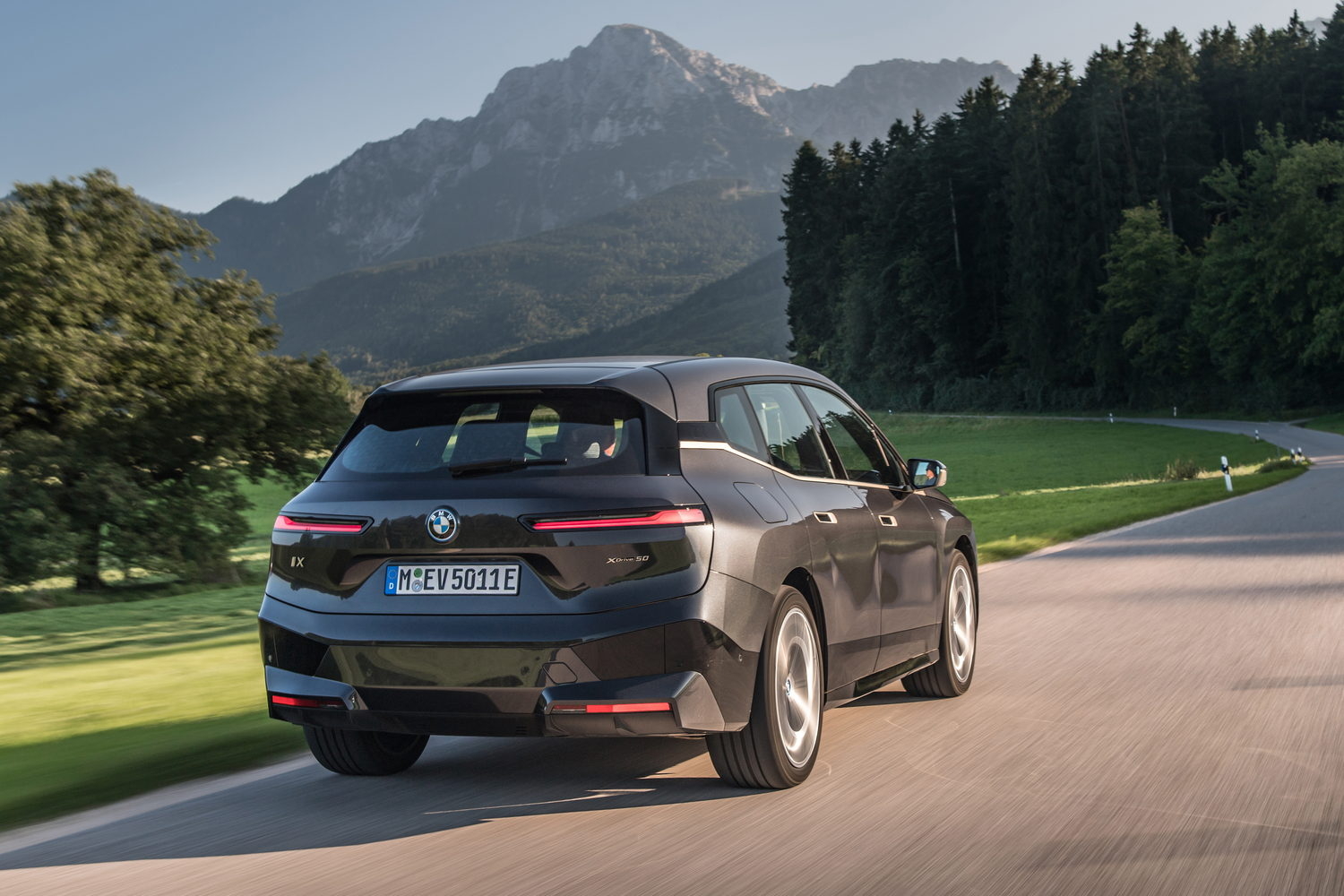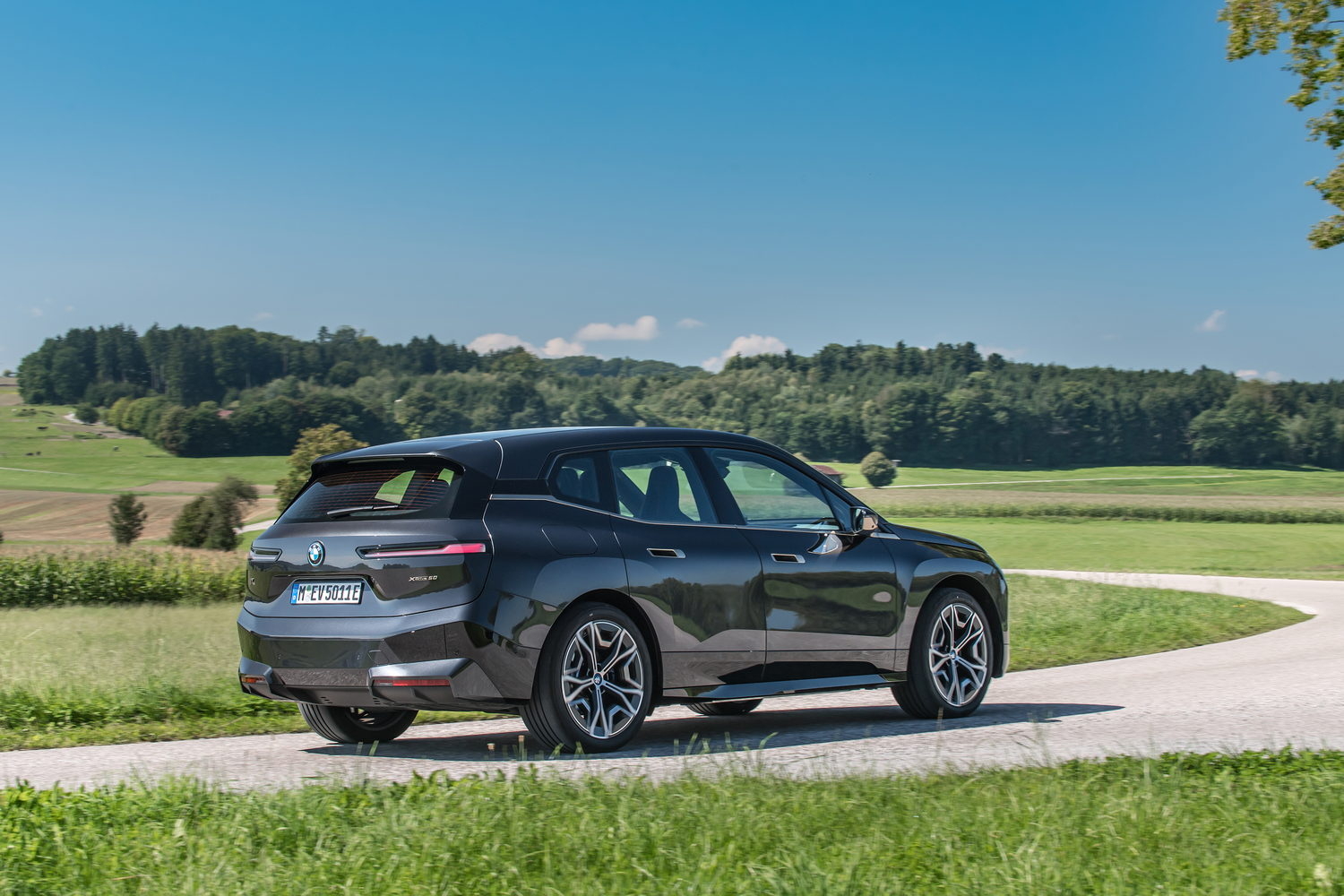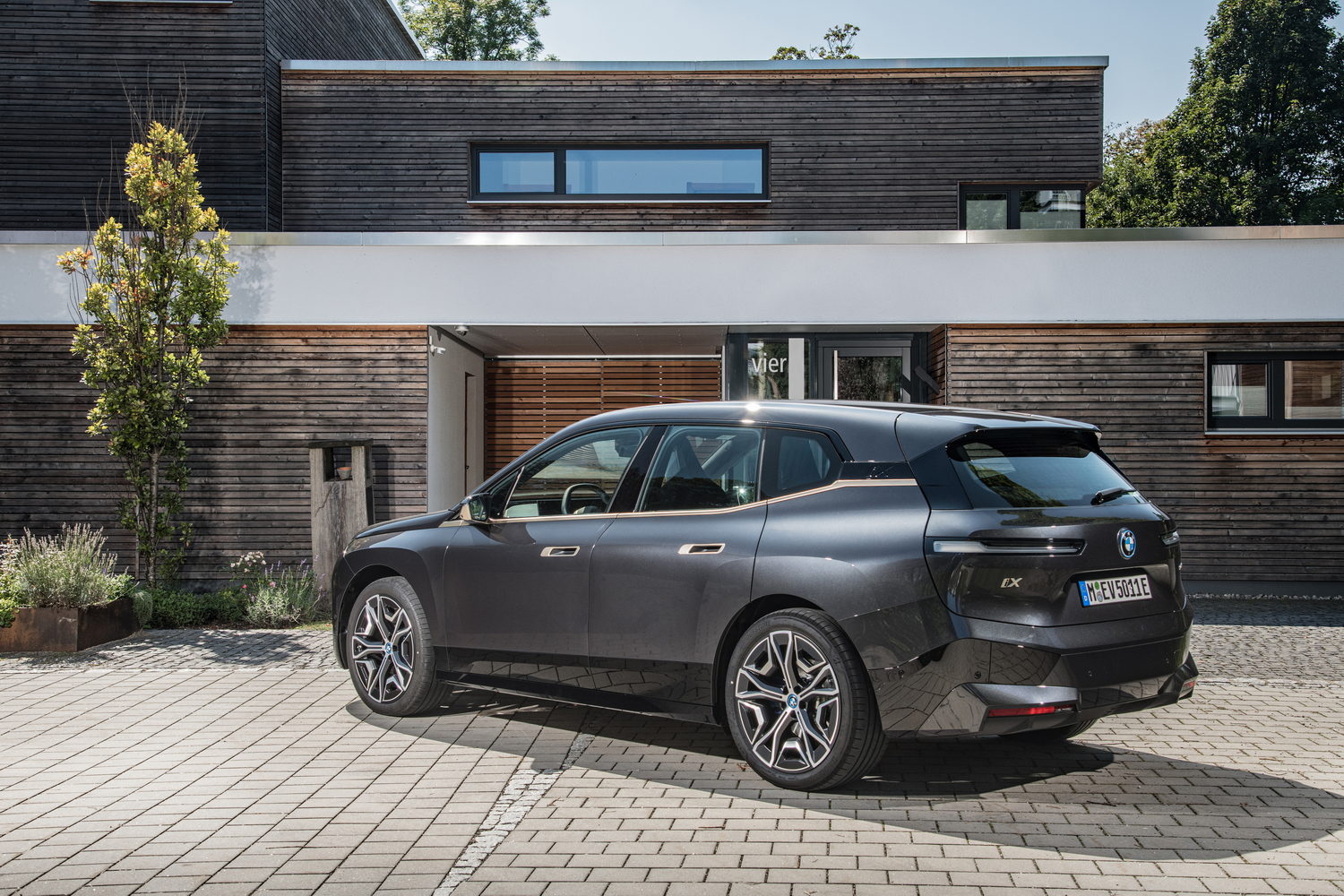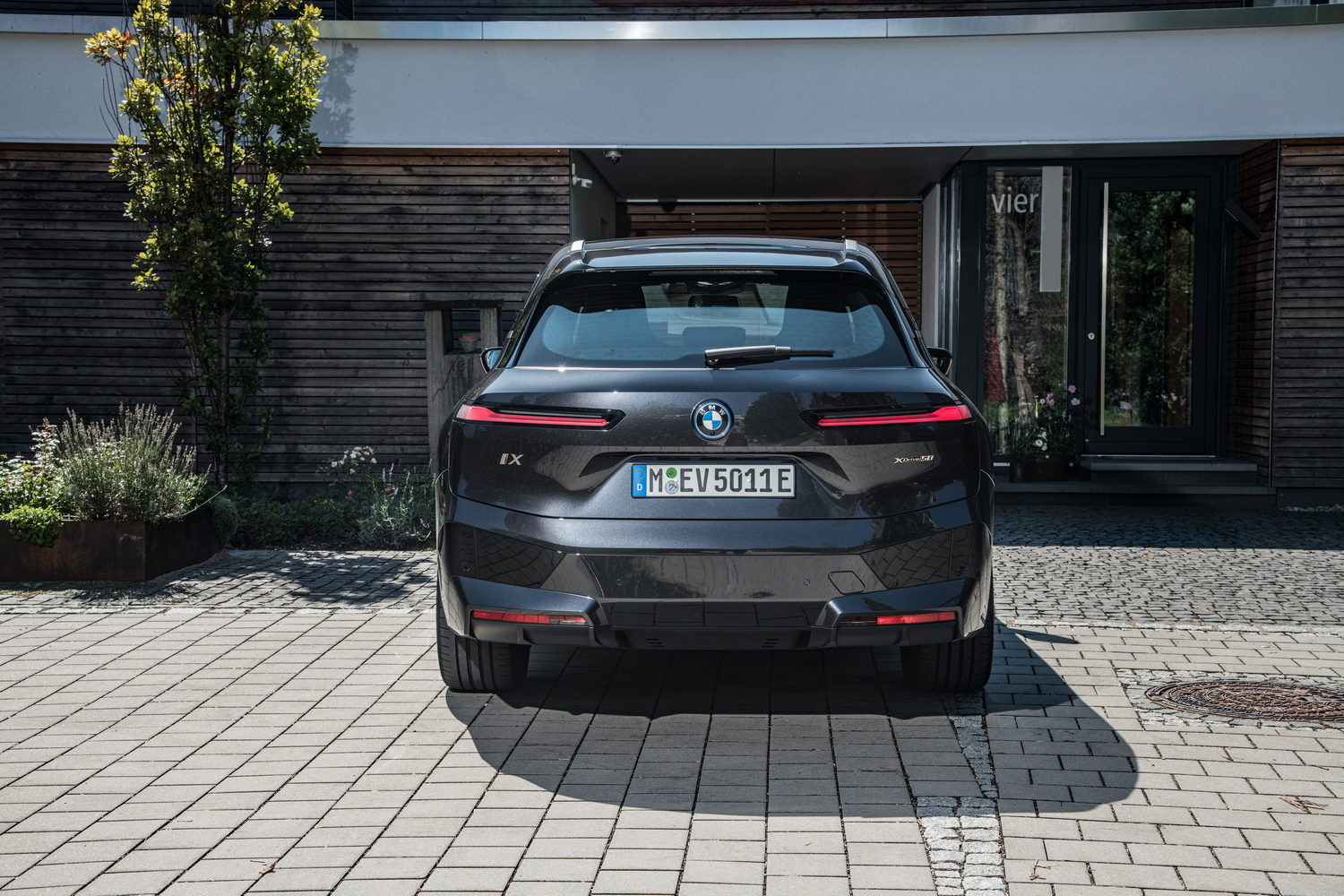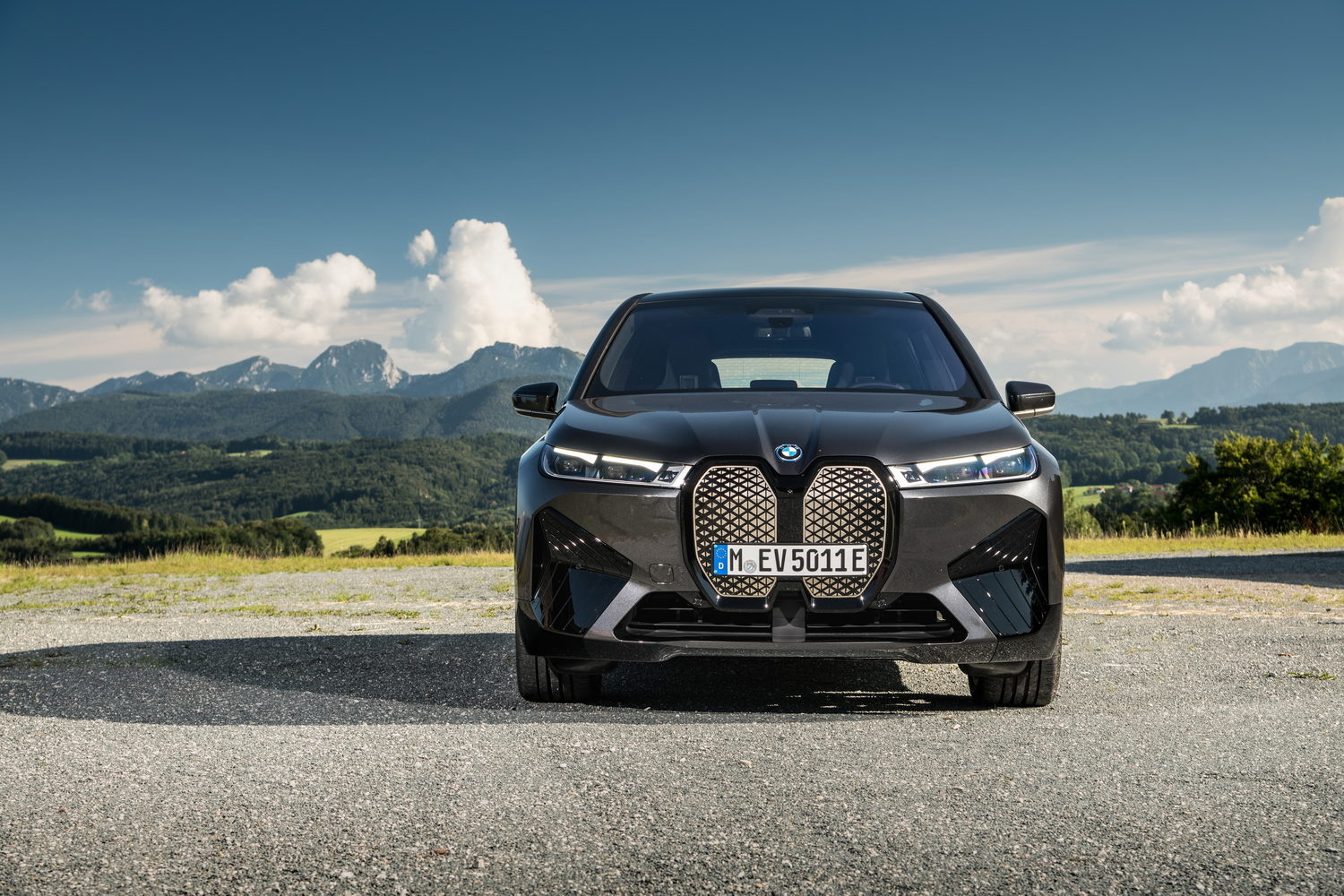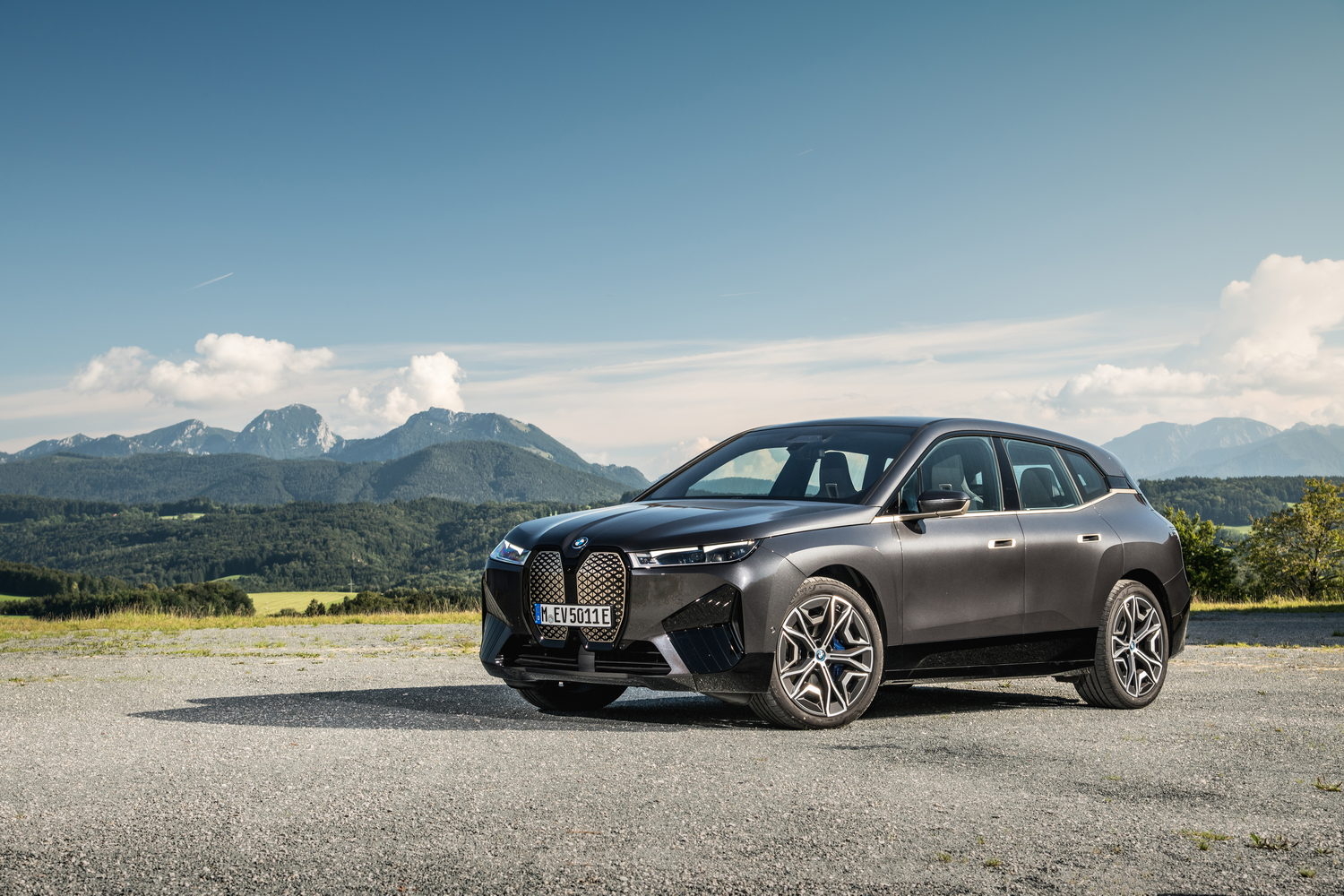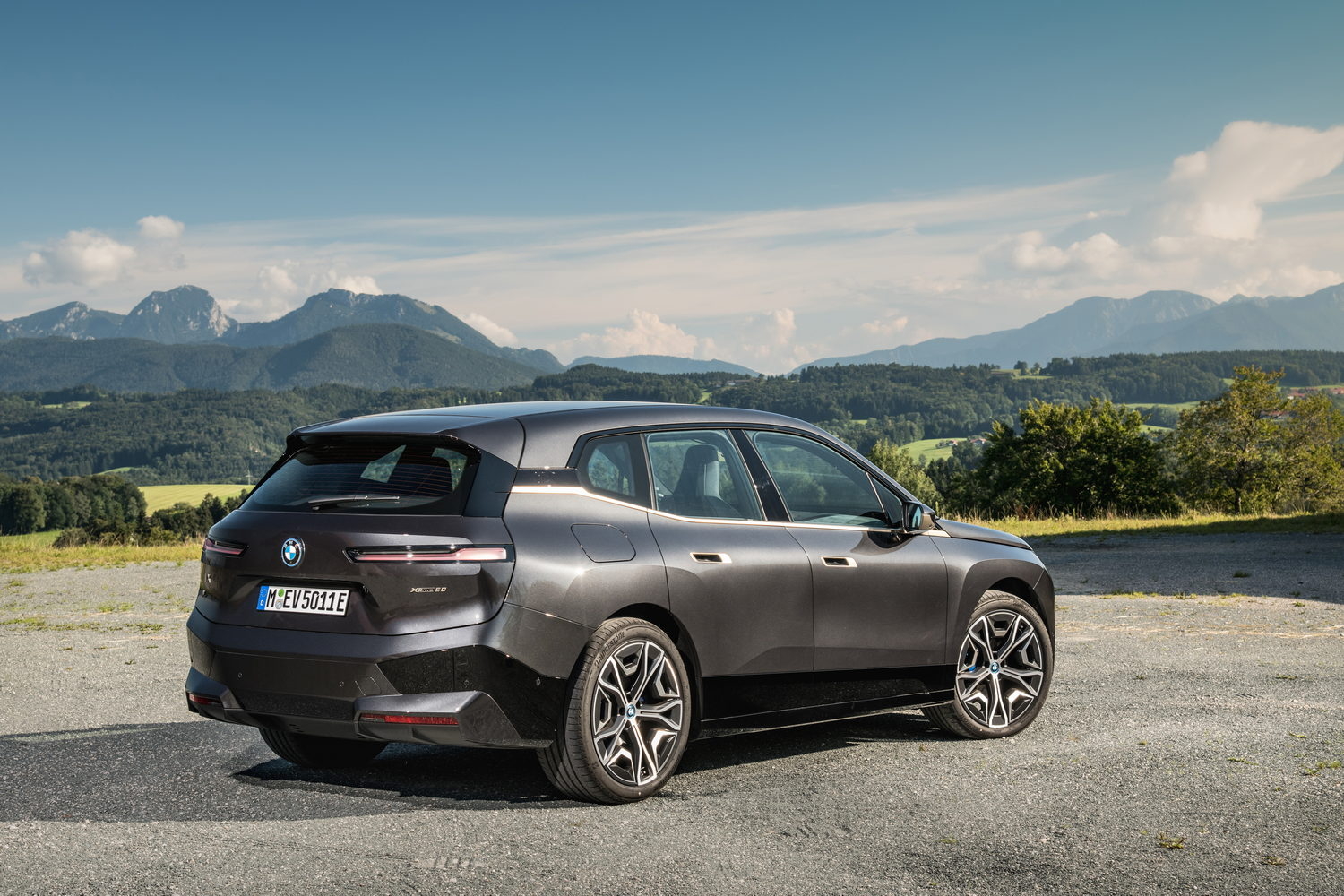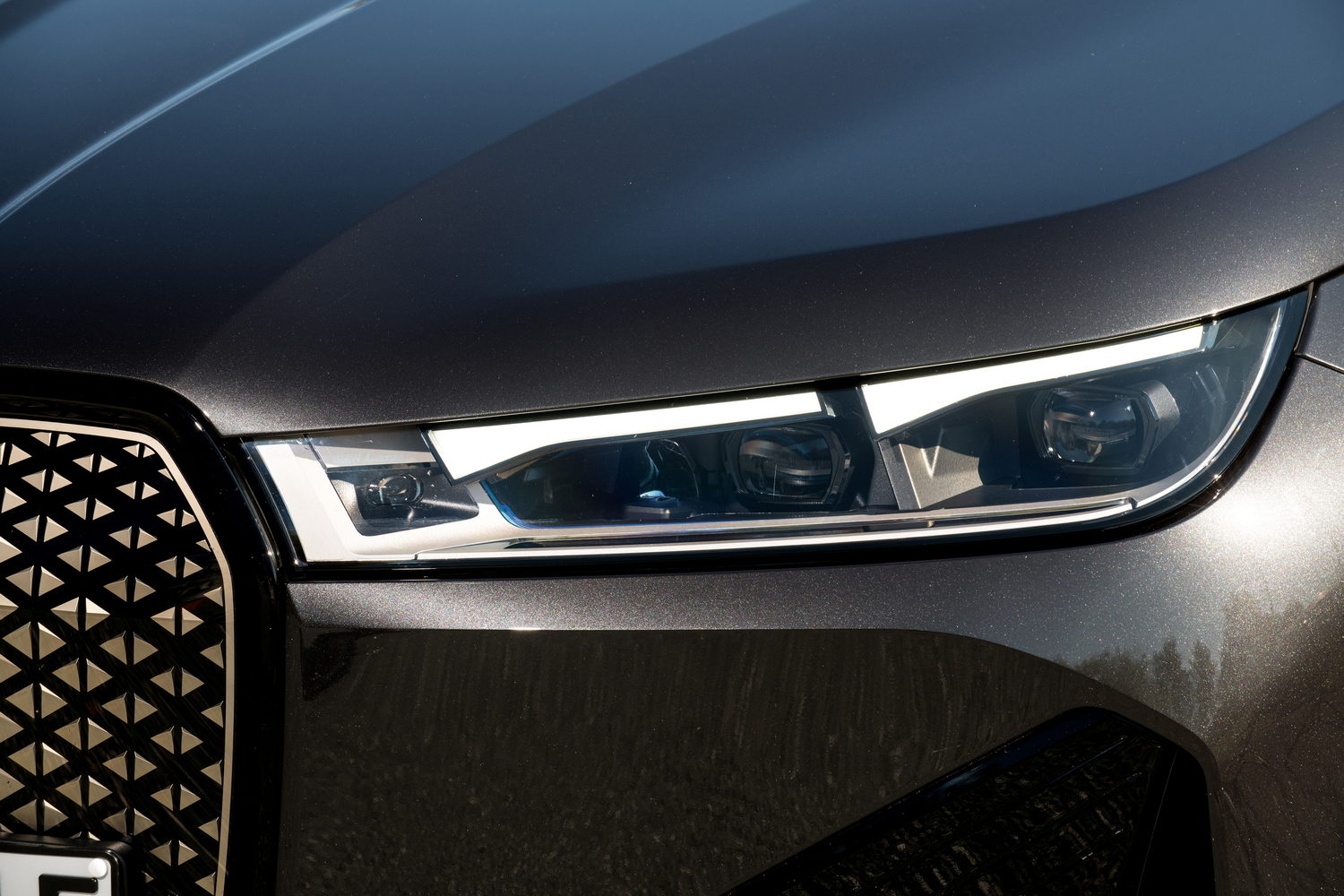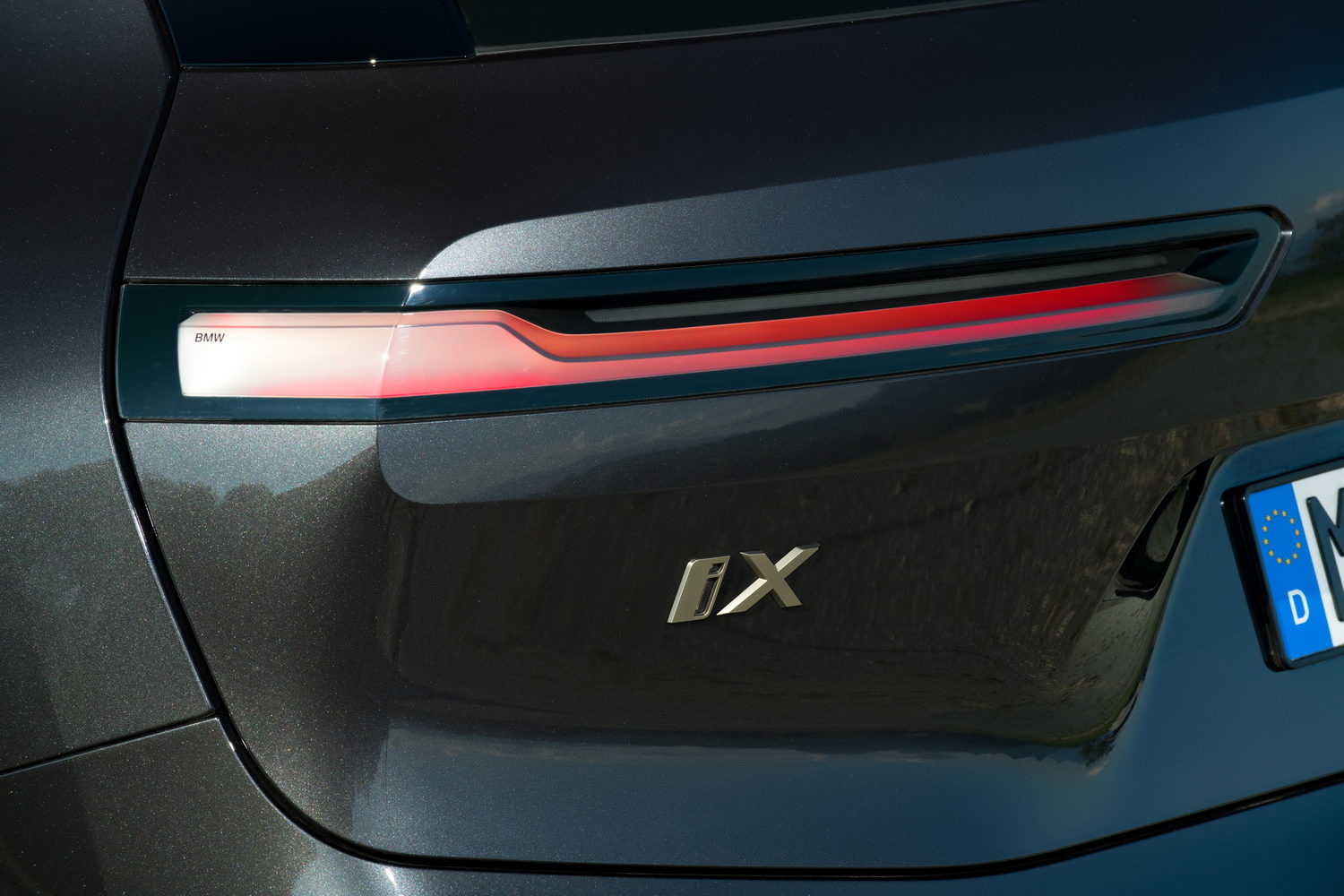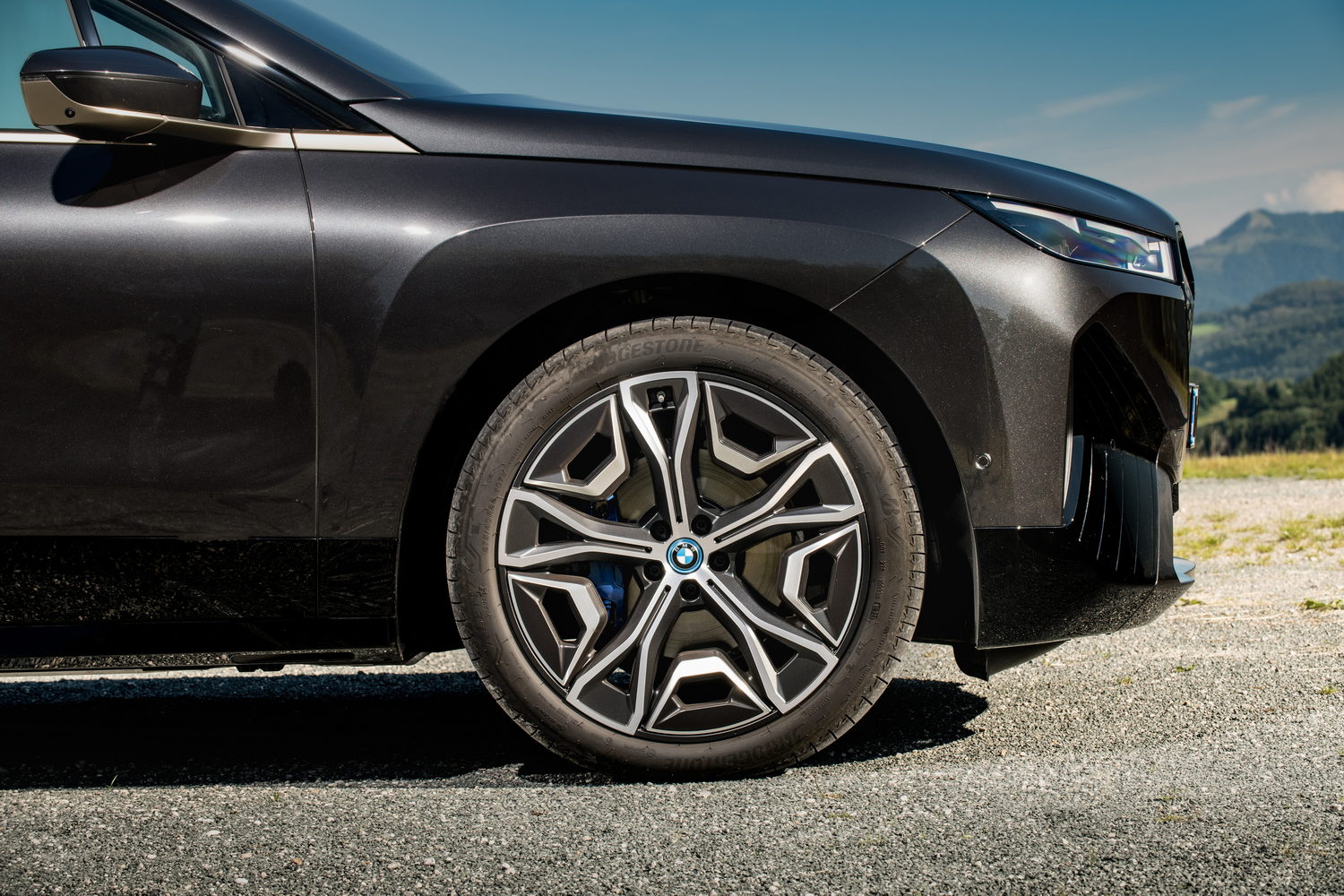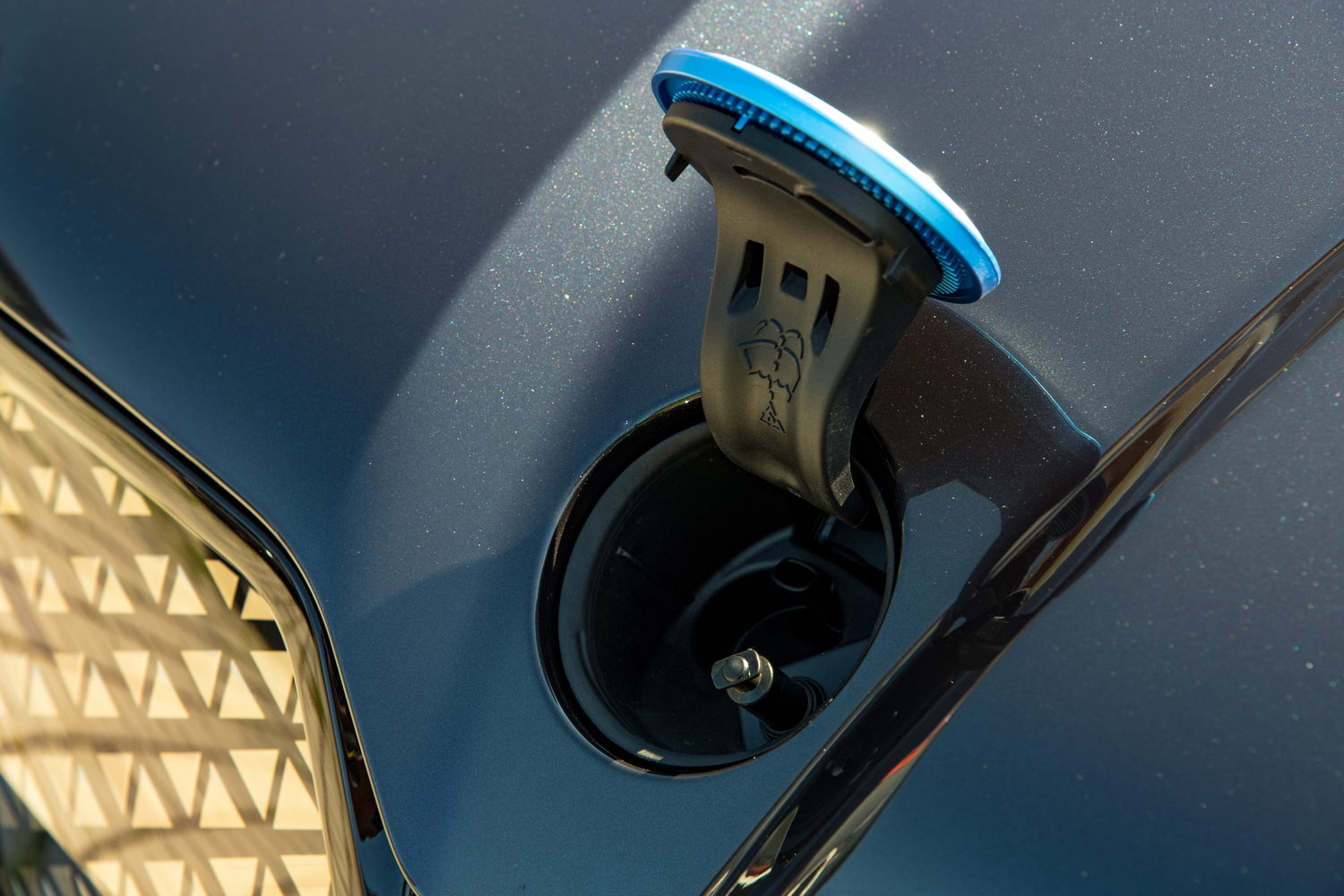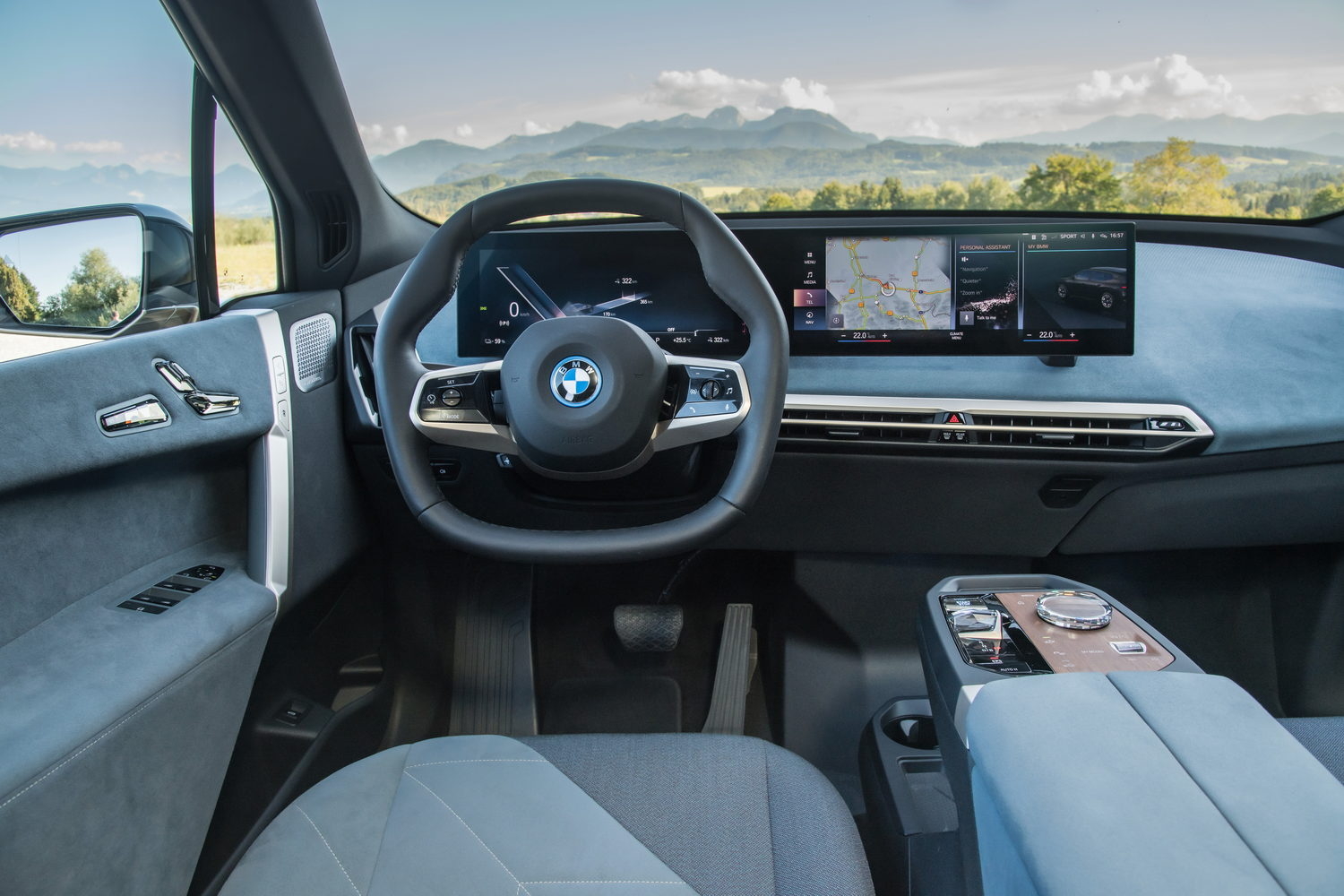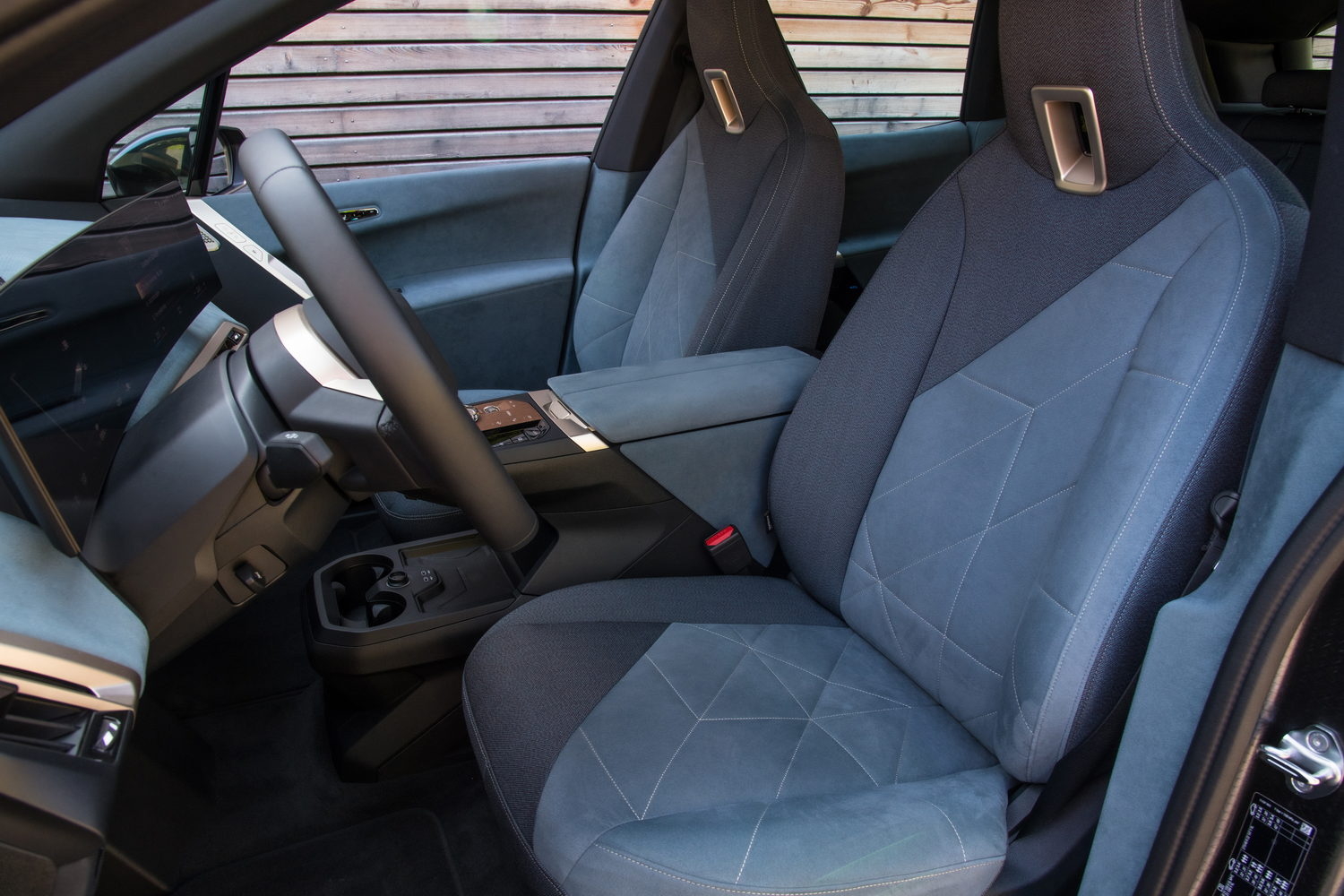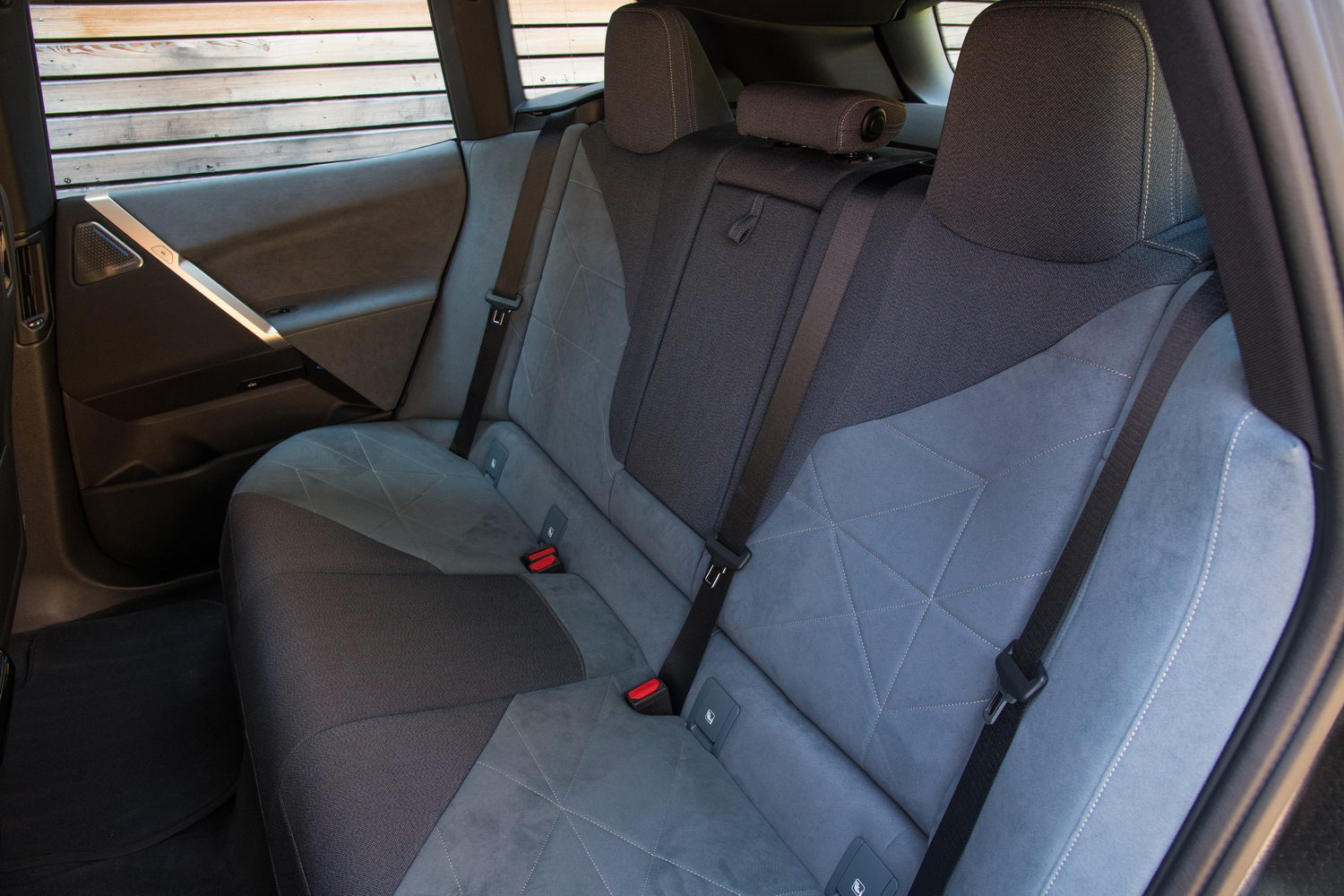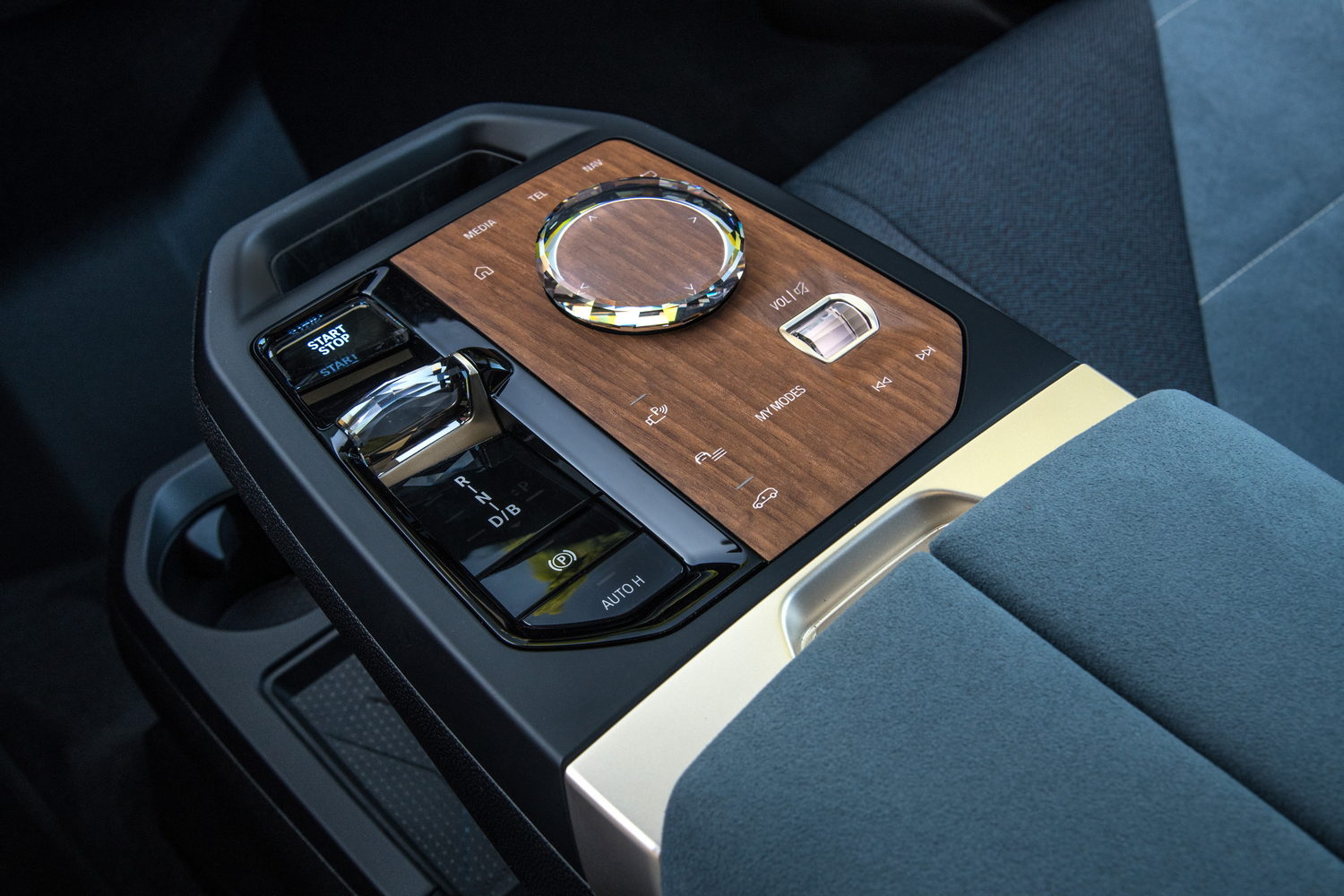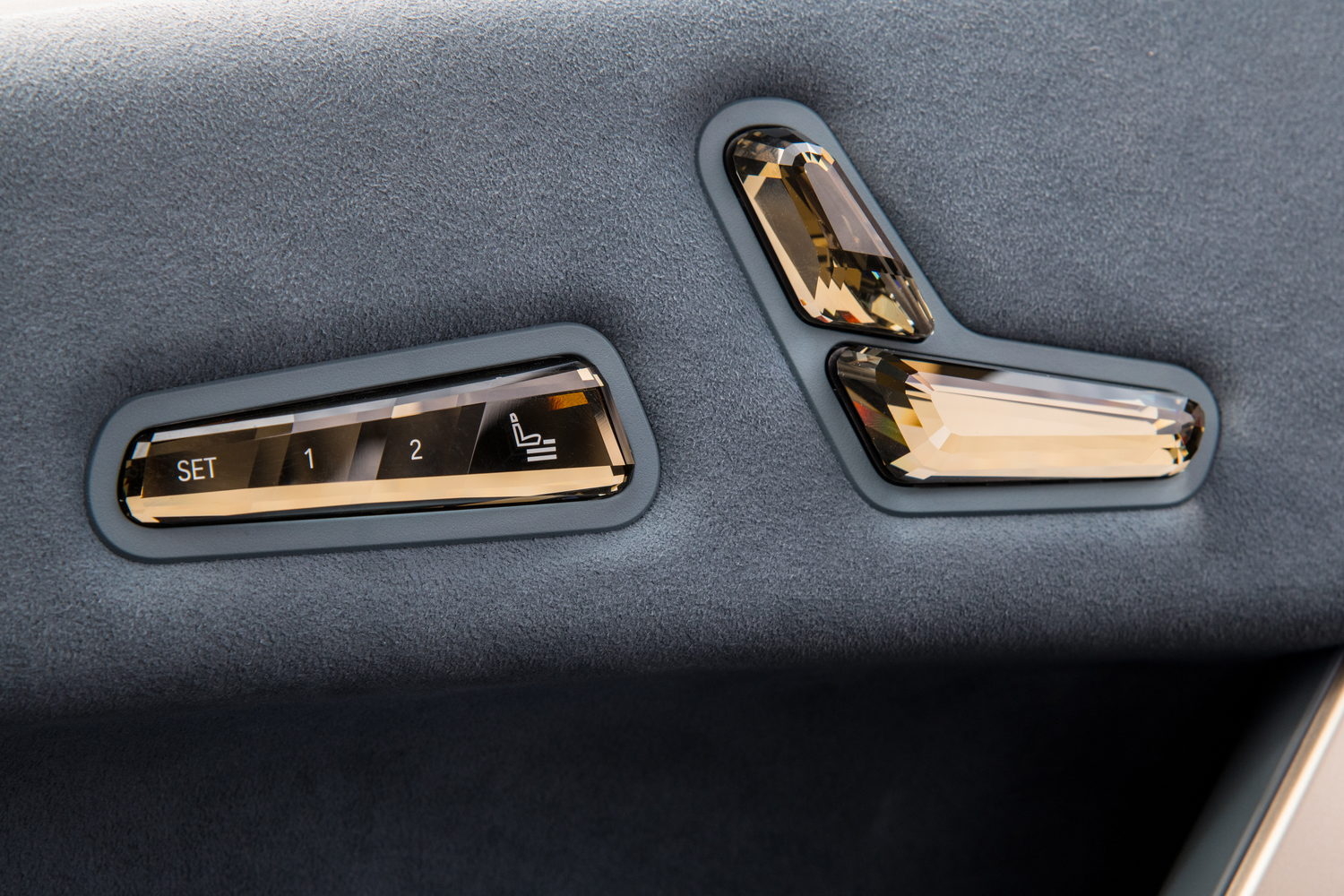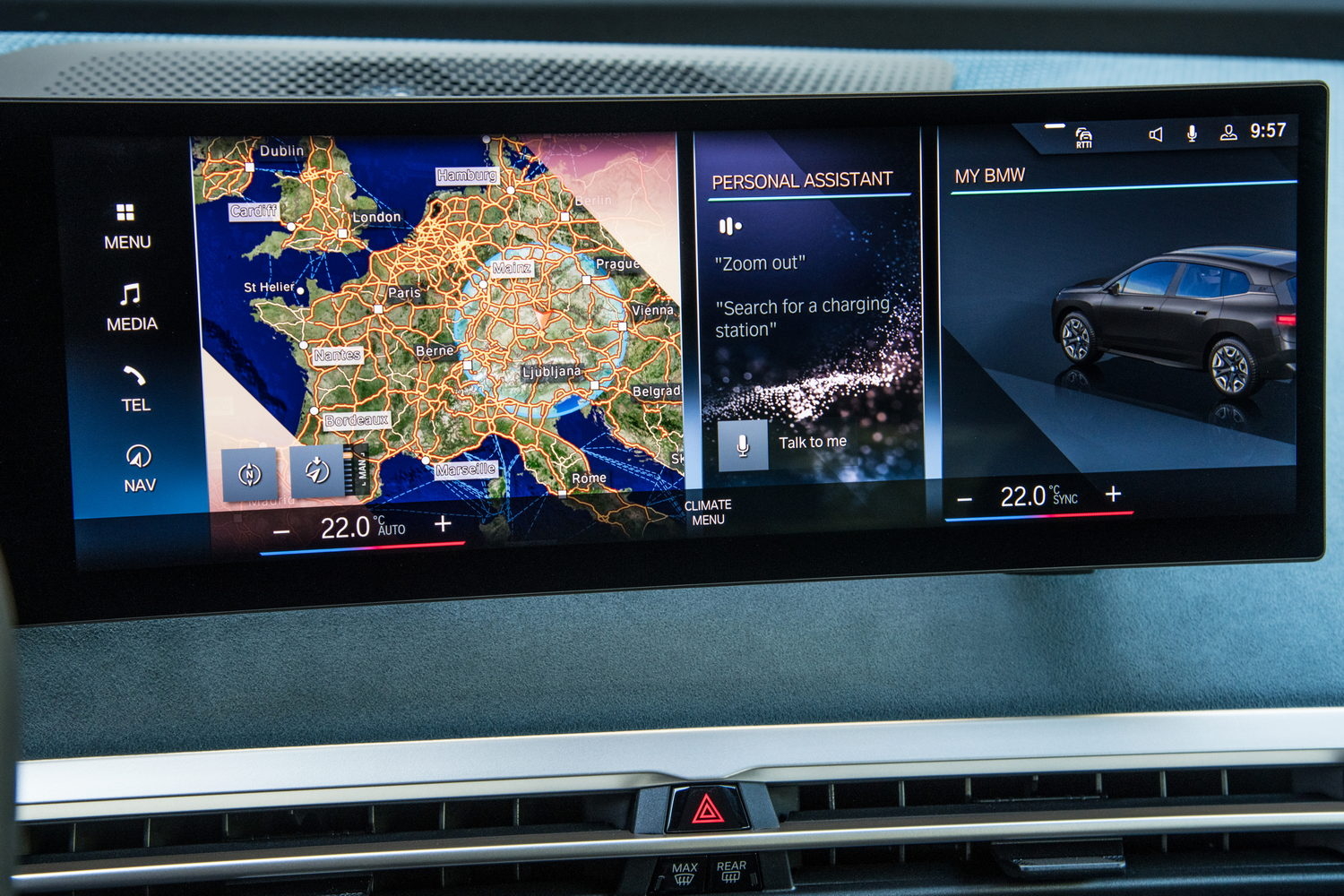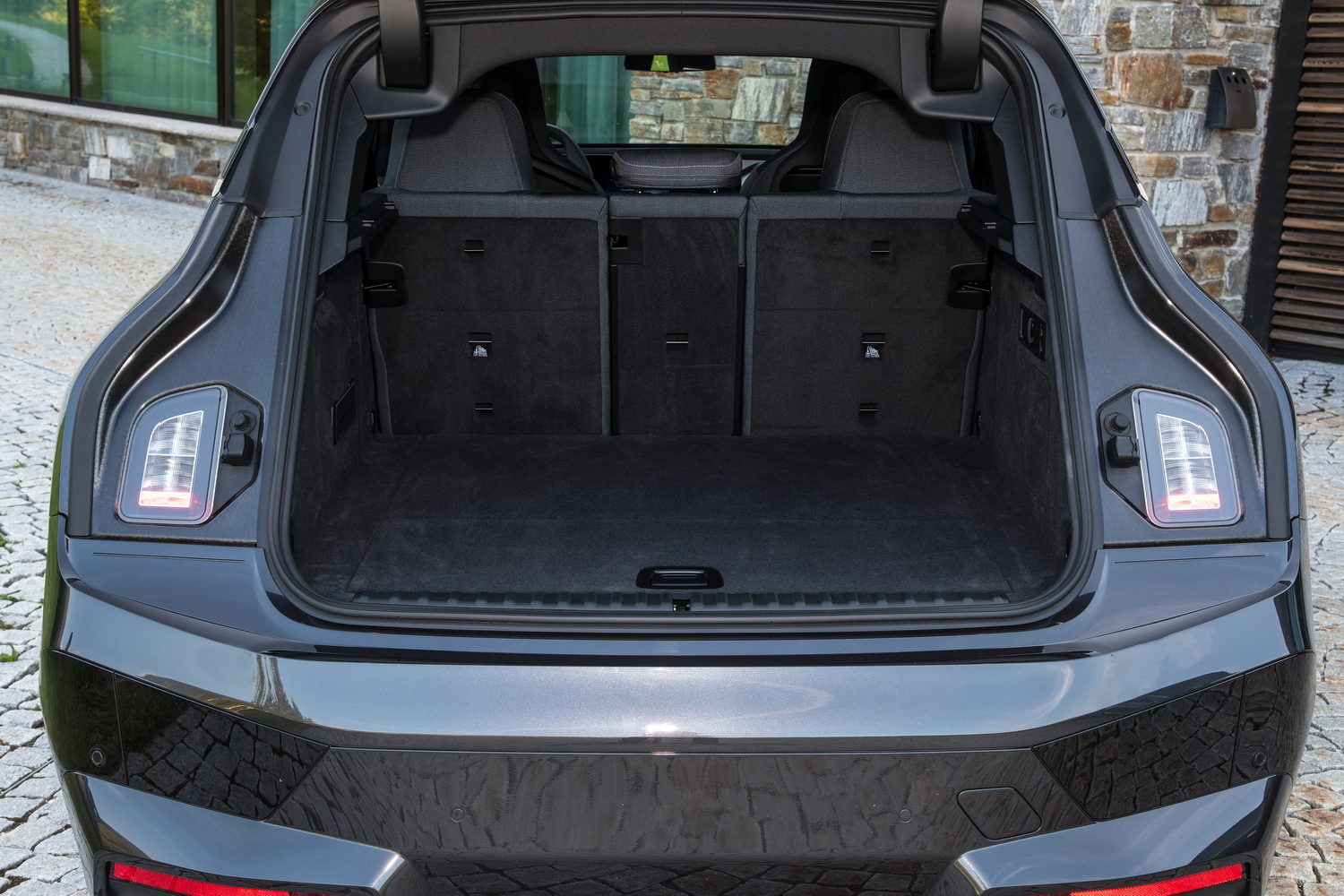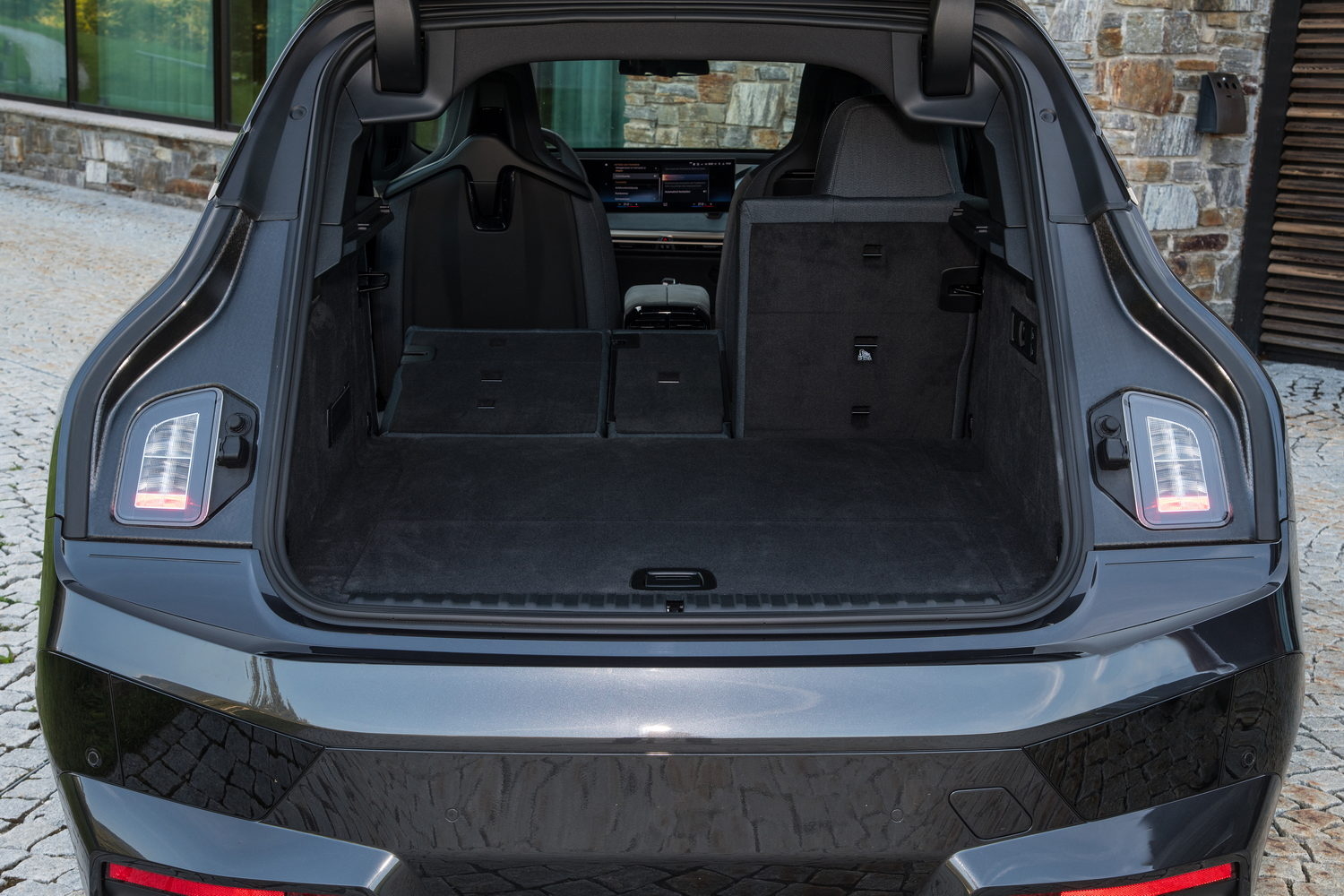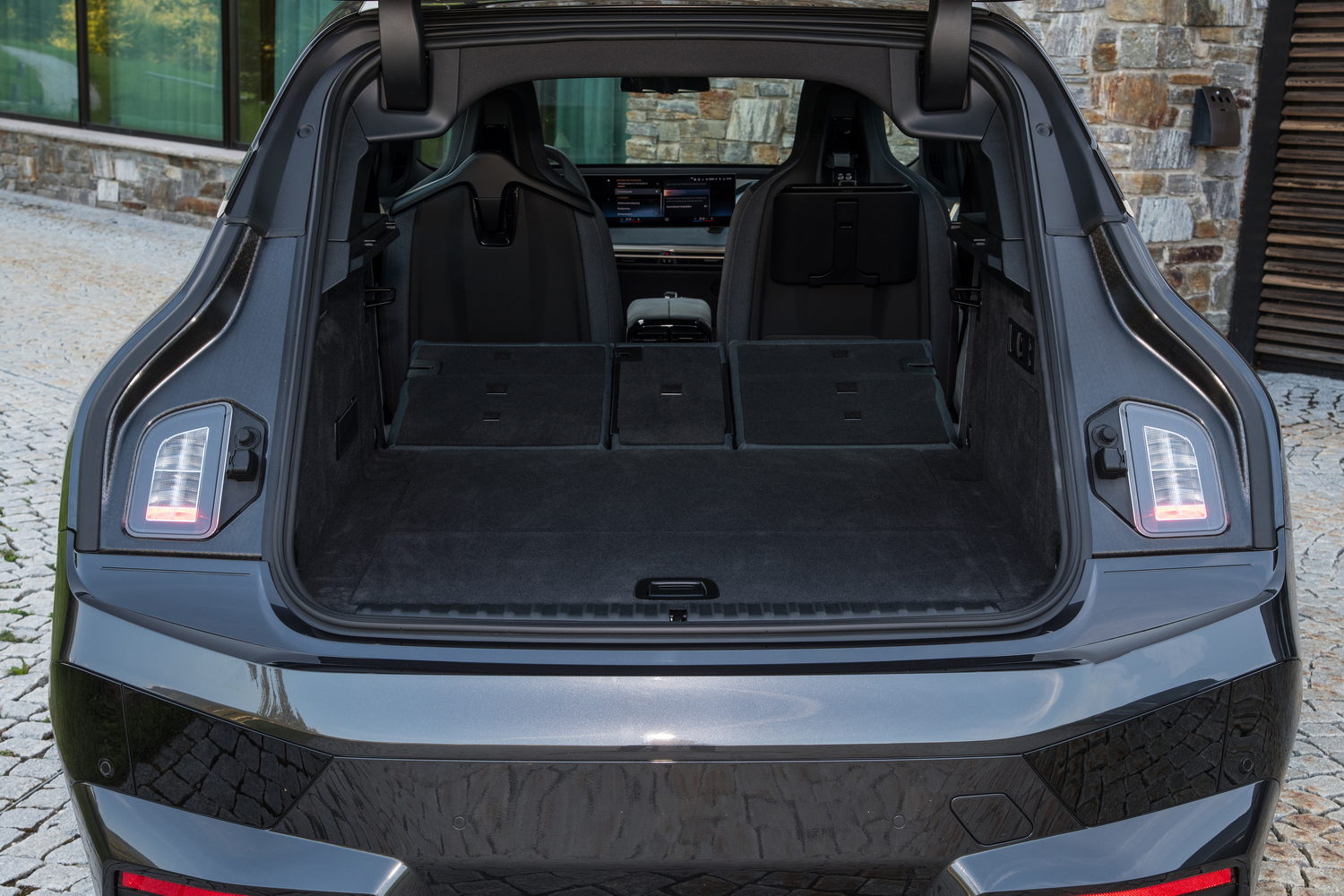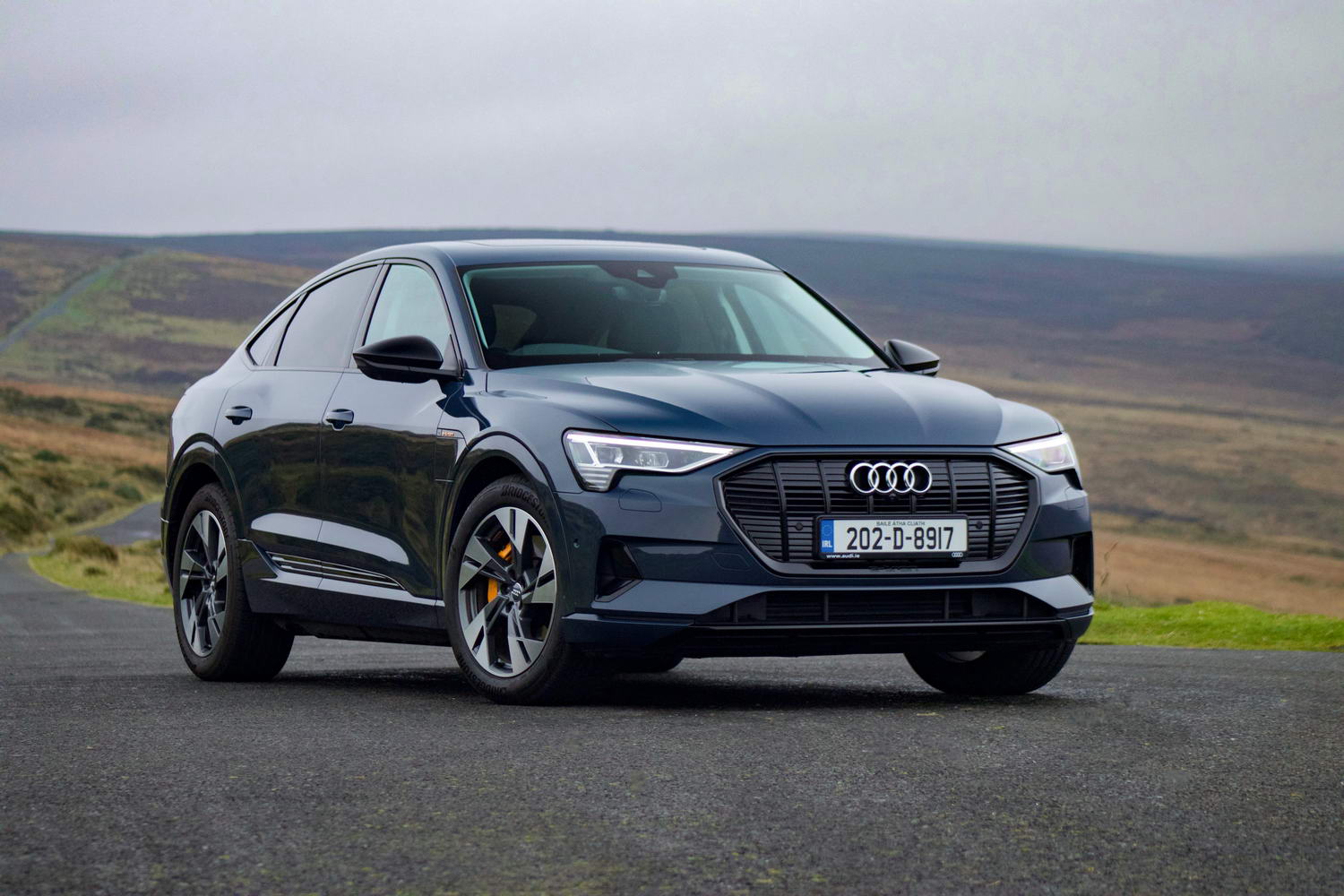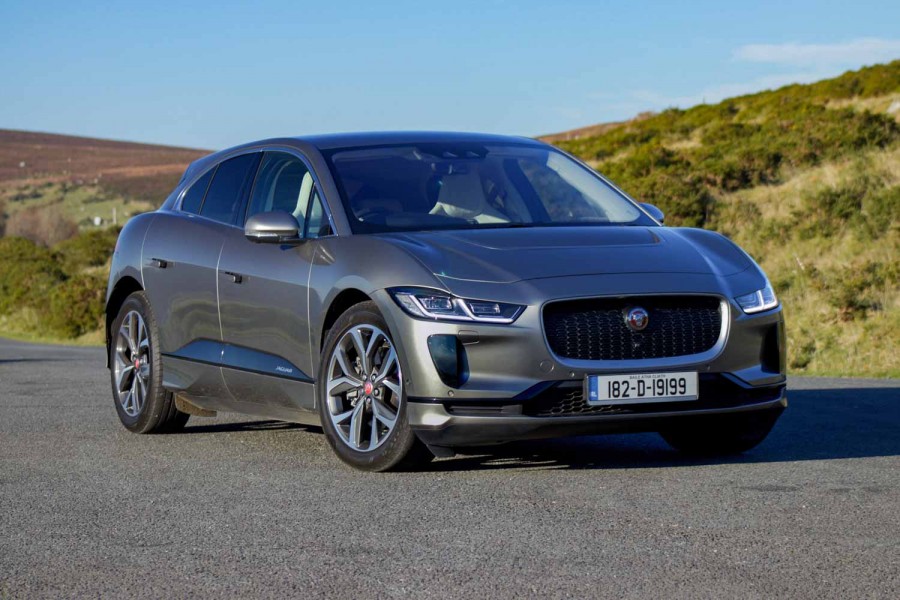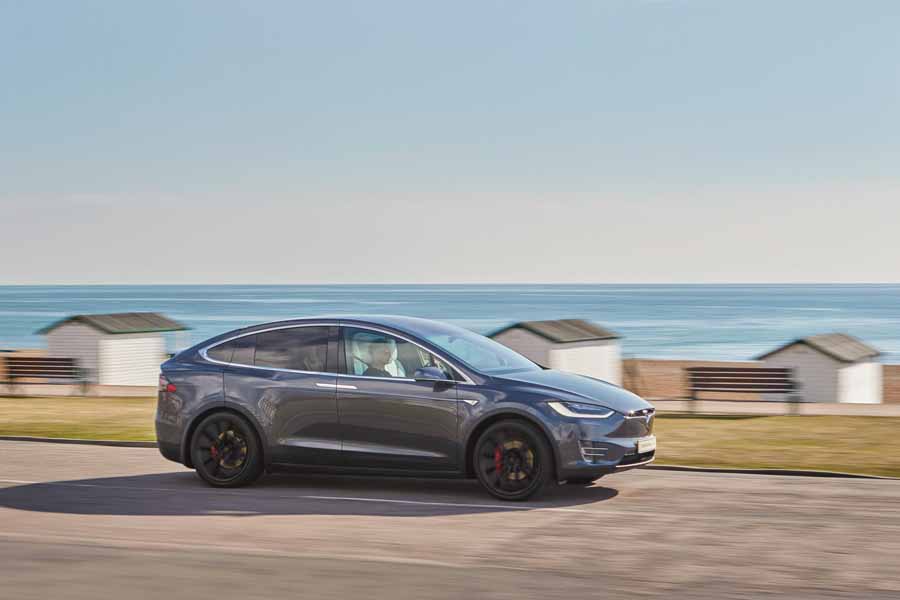Think of the BMW iX not as an electric version of the BMW X5, but as the starting point for a new generation of all-electric BMWs. It doesn't look pretty, but it's packed with cutting-edge technology, has a great electric powertrain and it also manages to drive rather well. Our first drive was in the current range-topper, the iX xDrive50.
In the metal
Perhaps it's a design that grows on you, but in our two days in the company of the BMW iX, it didn't, though the dark grey paint colour helps. It's not just the ugly grille that we found challenging, but the surfacing of the sides and the shape of the side glass, too. It clearly takes inspiration from the BMW i3, but we kinda wish it didn't. The nicest thing I would say about it is that it has presence.
In terms of size, it's about the same length and width as a BMW X5, but a little lower - similar to the X6. That's to help with aerodynamics, and BMW claims that it manages a coefficient of drag as low as 0.25. That's remarkable for a big SUV, and compares with 0.34 for the current X6.
Unlike the X5, the iX is purely a five-seat vehicle. And the boot, holding 500 litres, is only of average capacity for the size of the car. Nonetheless, the main cabin is a serious highlight. Three adults can comfortably fit in the rear seats thanks to the width available and a completely flat floor. Indeed, there's even a recess at the back of the centre console to make more space for the feet of the middle passenger.
A new design of front seat makes its debut in the iX, with an integrated headrest and highly distinctive quilting and stitching. There's a range of upholstery options, too, from synthetic leather to the real thing and the soft microfibre fabric seen here in our test car. The colour scheme extends to the doors and dashboard, and it looks quite unlike anything BMW has done in the past. Some of the controls and accents are picked out in a 'gold bronze' metallic finish that looks and feels classy - such as the door-mounted controls for the electric seat adjustment - while others can be changed to actual crystal glass, depending on options.
That applies to the rotary iDrive controller in the middle of the car, which is particularly satisfying to use. It sits on a panel with back-illumination showing various core menu options - such as TEL, NAV, etc. It has haptic feedback when pressed and can be finished in a tactile open-pore walnut wood. Just ahead of that is a slot designed to hold a smartphone upright and visible, while the front passenger's door gets another.
The central armrest hides more storage while below the top level of the centre console is another layer, holding a wireless charging pad, cupholders, 12-volt socket and USB-C ports.
Ahead of the driver is a brand-new steering wheel design, and a rather strange-looking one at that. It's sort of a rounded hexagon and, while we had misgivings, the wheel does feel good to hold and allows a great view of the instruments behind.
They're another talking point, as the 12.3-inch instrument screen is housed within an impressive 'BMW Curved Display' that appears to float above the main dashboard fascia. Behind the same curved piece of anti-reflective glass is a 14.9-inch touchscreen. What's more, it all runs a new generation of operating software, designed for 5G connectivity, close integration with smartphone apps and lots of personalisation. It feels like a big step up from the rest of the BMW range.
The dazzling new technology on offer and daring approach to design don't detract from the incredible sense of high quality inside the iX. It feels like a high-end model, from the solidity and tactility of the controls to the choice of materials throughout. It almost makes up for the exterior design...
Driving it
It's easy to focus on the seriously impressive numbers and judge the iX by them, but it's certainly not defined by such figures. For the record, the xDrive50 version tested here gets an electric motor on each axle, like all models in the line-up, while the peak outputs are 523hp and 765Nm. Despite the massive weight of the iX (this one weighs 2,585kg), it can do 0-100km/h in 4.6 seconds, and BMW sensibly limits its top speed to 200km/h.
We can confirm, thanks to the German autobahn network, that it reaches that velocity in a remarkably short amount of time. What's more, with 180km/h already showing on the speedometer, there's still savage acceleration on tap. Obviously, such speeds are irrelevant to most other parts of the world, but it does indicate how effortless this car's electric powertrain can shift its not inconsiderable bulk.
But we're already used to ludicrous performance figures from high-performance electric SUVs, aren't we? More impressive than all that is the manner in which the iX drives along. At its top speed, the only noticeable noise is the air being bludgeoned out of the way. Road noise is eerily absent, and the electric motors are silent too.
Admittedly, German asphalt is generally smooth and quiet, while our high-spec test cars were fitted with the optional 22-inch wheels and special tyres that feature a lightweight foam material. This alters the oscillation of the air within the tyres, reducing noise that the driver and passengers can hear. Rolls-Royce uses a similar idea for its Phantom and it's a worthwhile investment if you plan on driving your iX on the motorway a lot.
And that's made a lot easier by the efficiency and energy capacity of the iX's electric system. The battery is massive, rated at 105.2kWh usable capacity. On the WLTP cycle, the iX M50 manages between 549- and 630km on a full charge, depending on precise specification, which works out as an energy consumption rate of 23.0-19.8kWh/100km. We quizzed Johann Kistler, Project Director for the BMW iX, about this and he reckoned during development of the car that it wasn't difficult to manage 450-500km on a charge, even with some high-speed autobahn driving (he mentioned 150-170km/h).
In our 250km with the car, where we used all of its performance at times, tried all the driving modes and travelled over quite mountainous terrain for part of the journey, we saw an average of about 23kWh/100km. That's encouraging. And, if you have to rely on a public rapid charger, the battery can be juiced back up at a rate of up to 195kW.
Kistler also told us that he wanted the iX to offer the comfort of the BMW 7 Series and the handling of the 5 Series in one X5-sized package. First impressions suggest that it's very close on the comfort side of things, thanks no doubt to the adaptive damping and air suspension fitted to our test car.
It must have been a bigger challenge to fulfil the second part of his wishes, given the mass that has to be controlled. It helps the iX's cause that its battery pack is mounted in the floor, helping to bring down the centre of gravity, and it feels pleasant to drive slowly or quickly. No, it's never as engaging as the best of BMW's sports saloons, but it's astonishingly capable all the same, with well-weighted steering, great body and wheel control and good balance, too. You only really sense the weight at work if you misjudge braking into a tightening corner and have to brake while turning, as otherwise it shrugs off the mass and just goes where you want it to.
Variable ratio steering, fitted to all iXs as standard, really suits the car, making it feel more agile around town and through tight corners as the steering speeds up the further away from straight ahead you turn the wheel. Conversely, small movements of the wheel at higher speeds are not met with sudden changes in direction. Integral Active Steering - rear-wheel steering in BMW-speak - is optional and our test cars featured it. This subtly enhances the whole experience, again making the iX feel agile and manoeuvrable at low speeds, while augmenting stability during high-speed lane changes and cornering.
What you get for your money
Pricing for the iX is already on the BMW Ireland website and it shows a starting price of €85,815 for the iX xDrive40 version. That model's vital stats are maximum outputs of 326hp and 630Nm, and a range of up to 414km. There are Sport and M Sport trim lines.
The iX xDrive50 costs from €112,895, rising to €116,595 for the M Sport model. Standard equipment is generous to say the least.
Obviously, the iX is not a cheap new electric car for the masses, but when you realise it's a technology flagship for the brand, it looks to be good value. For reference, the BMW X5 costs from €81,504 in xDrive45e plug-in hybrid guise, or €95,131 with a diesel engine.
Summary
It's such a shame that commentary on the BMW iX has focused so much on the (undoubtedly divisive) appearance of the car, as underneath it's something very special indeed. A next-generation interior is mixed with a polished electric powertrain and extraordinary driving manners, and it's even well-priced all things considered. If BMW can filter the iX's technology through to its more affordable cars in the near future, its path to full electrification will be welcomed with open arms.

